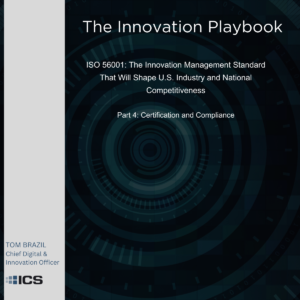As the new administration pushes for workforce reductions, government employees and contractors are navigating a rapidly changing and stressful landscape. I’ve been thinking a lot lately about how these changes create new challenges, not just in terms of dollars, but in the human element of how we collaborate and support the mission.
A Foundation of Trust
For years, the government and industry have worked side-by-side, developing strong personal and professional relationships. These partnerships are built on trust, collaboration, and a shared commitment to mission success. Contractors are not just vendors; we are trusted partners who help execute critical government projects that impact the lives of many. The success of these projects depends on the synergy between government employees and contractors—each playing an integral role.
The Impact of Downsizing on Collaboration
Downsizing brings pressure on both sides. For government employees, it can mean uncertainty and stress as roles shift or are eliminated. For contractors, it often means stepping up to fill gaps and maintain the high standards expected. But these adjustments are not easy. The reduction in staff creates risk to mission success when institutional knowledge is lost through reductions in the government workforce. This also disrupts the collaborative environment that has made government contracts successful, putting both sides under increased pressure to deliver more with less.
Adapting to Change – Together
Change is coming fast, and government agencies and contractors must work together to navigate these changes. Flexibility, clear communication, and mutual support are key. We all must adapt to this new environment, ensuring that the mission continues, even as the workforce shrinks and agencies reorganize. While contractors may not be directly impacted by internal government downsizing, we must still stand as partners, ready to step in and offer our support wherever needed.
The Human Element of Downsizing
The emotional toll of downsizing is real. Government employees face uncertainty, job stress, and an overall feeling of instability. While we, as contractors, may not feel this internally, we must be there to help support our government partners through these tough times. This is more than business—it’s about people. People with families, hopes, dreams, and obligations to others. We must focus on maintaining morale and being the trusted partner who helps keep the mission on track.
How Can Industry Help?
It can be hard to be personally supportive while maintaining professionalism and still achieving the mission. Here are some ways we’re trying to help our government leaders
- Keep open lines of communication: Industry should ensure government partners are informed of any changes and updates that may affect their work and the mission.
- Address concerns proactively: Acknowledge the challenges of downsizing and offer support to reassure government employees during this time of change.
- Listen actively: Understand that downsizing can be emotionally and professionally difficult for government employees, and provide a supportive, empathetic ear.
- Provide moral support: While not directly impacted by internal changes, contractors should offer encouragement and recognition to help maintain morale.
- Be flexible in our approach: Contractors should adapt to the changing needs of government agencies by adjusting timelines, deliverables, and processes as necessary. We have a Guarantee for all of our government contracts: We will say yes util we have to say no… or “Yes, but…”
- Identify innovative solutions: Offer flexible, scalable solutions to handle additional tasks or help reallocate resources when the workforce is reduced.
- Invest in partnerships: Demonstrate a commitment to long-term relationships with government partners, helping navigate these challenges together.
- Support professional growth: Offer mentoring, or other resources to help government employees adapt to role changes or develop new skills.
- Work hand-in-hand to find solutions: Actively collaborate with government employees to create solutions for maintaining mission success despite downsizing.
- Recognize government employees’ hard work: Contractors should acknowledge the efforts of government employees, celebrating achievements to boost morale.
- Encourage a sense of shared purpose: Remind everyone of the importance of the mission to foster a collaborative, team-oriented environment.
- Keep the focus on mission success: Stay focused on the bigger picture and the importance of the work at hand.
These are monumental changes that affect us all. As contractors, we have a responsibility to support our government partners, not just with services, but with empathy and understanding.
What Will *YOU* Do?
How do you think we can maintain strong, supportive relationships during these times of downsizing? What can we do to ensure that the mission continues despite the shifting landscape?







